Introduction
Welcome to June, the month where the promise of sun-drenched days and warm evenings is both a blessing and a curse. While we eagerly anticipate barbecues, beach outings, and endless outdoor fun, June also brings a host of health issues ready to rain on our summer parades. From pollen-induced sneezing fits to heat-induced exhaustion, this month keeps us on our toes. But fear not—being aware of these common June health ailments can help you enjoy the summer season while sidestepping the worst of its pitfalls. So, let’s dive into the quirks and quagmires of staying healthy in June, one sunburn and mosquito bite at a time.

Allergies
Ah, June—the month when nature decides to gift us with an all-you-can-sneeze buffet of pollen from grasses, trees, and weeds. For those of us blessed with seasonal allergies, this means a symphony of sneezing, runny noses, itchy eyes, and congestion. Picture yourself ready to enjoy a beautiful sunny day, only to end up resembling a character from a cartoon with a perpetual cloud of pollen hanging over your head.
But it’s not all doom and gloom. Managing allergies effectively can turn the tide. Start with over-the-counter antihistamines, nasal sprays, and eye drops to tackle those pesky symptoms. Additionally, try to stay indoors during peak pollen hours, usually early morning and late evening. By keeping your windows closed and use air conditioning with a clean filter to reduce indoor pollen levels.
And for the love of all things breathable, resist rubbing your eyes, no matter how itchy they get. Your future self, not looking like a raccoon, will thank you. June might be the month of pollen-palooza, but with the right precautions, you can still enjoy all the outdoor fun without turning into a sneeze machine. If you suspect allergies are the culprit behind your symptoms, consider getting an allergy test at Walk-In Lab .

Heat-Related Illnesses
As June cranks up the thermostat, it also turns up the risk for heat-related illnesses like heat exhaustion and heat stroke. Nothing screams “summer fun” like the prospect of sweating buckets and feeling faint, right? Heat exhaustion sometimes just sneaks up on you with symptoms like heavy sweating, weakness, dizziness, and nausea. If left unchecked, it can escalate to heat stroke, a serious condition marked by confusion, rapid heartbeat, and even loss of consciousness.
To keep your cool in the summer heat, it’s essential to stay hydrated. Try to drink water throughout the day, even if you don’t feel thirsty. By avoiding caffeinated and alcoholic beverages as they can dehydrate you faster than a July sunbeam on a popsicle. If you wear light, breathable clothing and a wide-brimmed hat can also help you beat the heat. And for goodness’ sake, and make sure to take breaks in the shade or air-conditioned spaces to give your body a chance to recover.
If you start feeling woozy or notice someone else struggling, act fast—move to a cooler place, sip on some water, and if symptoms don’t improve quickly, seek medical help. Remember, your goal this June is to enjoy the sunny weather without becoming a cautionary tale of what happens when you ignore the heat. So, slather on the sunscreen, don your coolest shades, and keep that water bottle handy. Your summer self will thank you.

Sunburn
June is the unofficial start of sunburn season, where our enthusiasm for outdoor activities often outpaces our common sense about sun protection. We’ve all been there—enjoying a day at the beach, only to return home looking like a lobster auditioning for a seafood commercial. Sunburn is not just a temporary discomfort; it’s a serious issue that increases the risk of skin damage and skin cancer.
To avoid transforming into a human tomato, make sunscreen your best friend. By choosing a well made broad-spectrum sunscreen that has atleast SPF 30 and apply it generously to all exposed skin. Don’t forget those easy-to-miss spots like your ears, the back of your neck, and tops of your feet. Then reapply sunscreen every two hours, or more often if you’re swimming or sweating like you’re in a sauna.
Beyond sunscreen, consider wearing protective clothing, such as long-sleeved shirts, wide-brimmed hats, and sunglasses. Seeking shade during the peak sun intensity hours from 10 a.m. and 4 p.m. can also help protect your skin. If you do get sunburned, soothe your skin with aloe vera gel or cool baths, and stay hydrated to help your body recover.
If you’re sunbathing to boost your vitamin D levels because you think you might be deficient, there’s a smarter way to go about it. Instead of risking sunburn, consider getting a simple vitamin D blood test to check your levels. This way, you can safely and effectively increase your vitamin D without sacrificing your skin’s health. Remember, a little sunburn might seem like a small price to pay for a day of fun in the sun, but your future self will thank you for taking sun protection seriously. So, before you head out, arm yourself with sunscreen, protective gear, and a good dose of sun sense.

Dehydration
As the mercury rises in June, so does the risk of dehydration. Whether you’re hitting the trails, lounging by the pool, or just enjoying a sunny day, staying hydrated is crucial. Dehydration can sneak up on you, bringing along a delightful array of symptoms like thirst, dry mouth, dark urine, dizziness, and fatigue. It’s the body’s not-so-subtle way of saying, “Hey, I need some water here!”
The good news is that preventing dehydration is straightforward. One of the most important things is to ensure that you drink an adequate amount of water every day. Don’t wait until you feel parched to grab a glass—by then, you’re already on your way to dehydration station. Carry a reusable water bottle with you and make it a habit to sip regularly, especially if you’re active or spending a lot of time in the sun.
In addition to water, consider hydrating with drinks that contain electrolytes, particularly if you’re engaging in intense physical activities. These can help replenish essential minerals lost through sweat. Also, eat water-rich foods like fruits and vegetables—watermelon, cucumbers, and oranges are all great choices.
Remember, alcohol and caffeine can dehydrate you, so if you’re enjoying a summer cocktail or a cup of coffee, balance it out with an extra glass of water. And don’t forget to listen to your body. If you start feeling lightheaded, tired, or notice dark urine, take a break in the shade and rehydrate immediately.
By staying hydrated it keeps you feeling good but also helps you make the most of your summer activities without the unwelcome interruption of dehydration. So, fill up that water bottle, embrace the hydration game, and keep the summer fun rolling smoothly.

Food Poisoning
June is prime time for picnics, barbecues, and all sorts of outdoor feasts. While these gatherings are a blast, they also come with the risk of food poisoning. Nothing ruins a sunny day faster than a bout of nausea, vomiting, or a mad dash to the nearest restroom. Common culprits include undercooked meats, improperly stored perishables, and cross-contamination.
To keep your summer cookouts safe and enjoyable, start with proper food handling. Ensure that meats are cooked to the right internal temperature—use a food thermometer to be sure. For example, ground beef should reach 160°F, while chicken needs to hit 165°F. Keep and raw meats separate from other foods to avoid cross-contamination, and wash your hands, utensils, and surfaces frequently.
It’s crucial to store perishable foods properly. Don’t leave them out in the heat for more than two hours, or just one hour if it’s above 90°F. You can use coolers with lots of ice or ice packs to keep foods cold. Also, it’s a good idea to keep drinks in a separate cooler to minimize frequent opening and closing.
Pay attention to those picnic staples like potato salad and coleslaw, which can turn into bacterial breeding grounds if not kept cool. And don’t forget about leftovers. If you’re not sure how long something has been sitting out, it’s better to err on the side of caution and toss it.
By taking these precautions, you can enjoy your outdoor meals without the unpleasant aftermath. So go ahead, fire up the grill, enjoy that potato salad, and keep food poisoning off your summer menu. With a little care and attention, your barbecues can be memorable for all the right reasons.
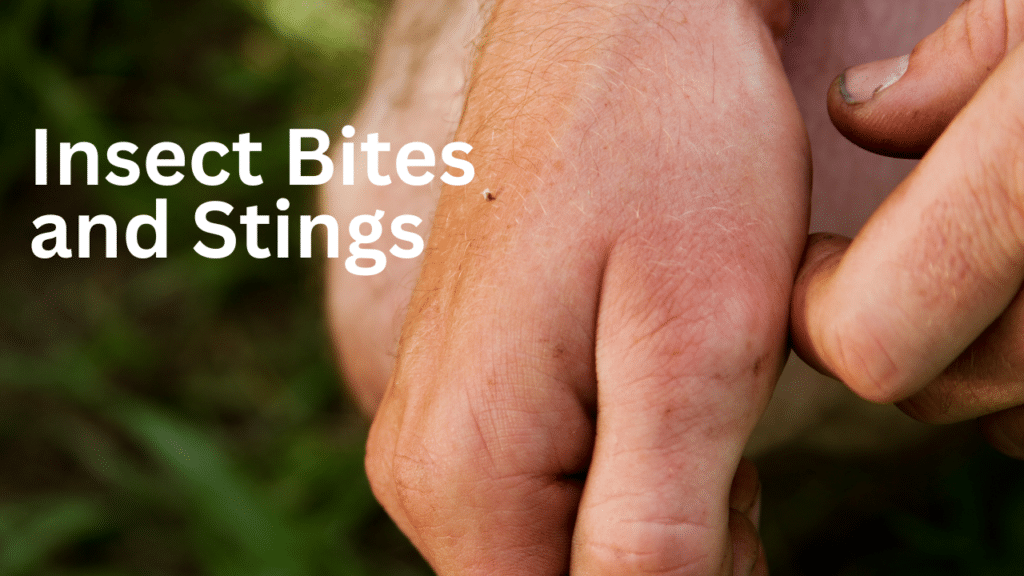
Insect Bites and Stings
June is not only the season for sun and fun but also for an uptick in encounters with mosquitoes, ticks, and other pesky insects. These little critters are more active in the warm weather, and their bites and stings can range from mildly annoying to downright dangerous. Mosquito bites can lead to itchy welts and potentially transmit diseases like West Nile virus, while ticks can carry Lyme disease.
To deter insects, it is advisable to use insect repellent. DEET, picaridin, or essential oils like lemon eucalyptus have been proven to be effective in repelling mosquitoes and ticks. Apply the repellent to exposed skin and clothing before going outside, and follow the reapplication instructions. When you’re in wooded or grassy areas, it’s a good idea to wear long sleeves and pants. Also, tuck your pants into your socks to minimize skin exposure.
Around your home, take steps to reduce mosquito breeding grounds. Empty standing water from flowerpots, birdbaths, and gutters regularly. Consider using mosquito netting or screens if you’ll be outside for extended periods, especially in the evening when mosquitoes are most active.
Ticks are a bit trickier since they like to hide in tall grass and shrubs. Remember to stay in the middle of trails when hiking or walking in wooded areas, and try to avoid touching plants. Make sure to check for ticks on yourself, your kids, and your pets after being outside for a while. Ticks love to hide in warm, hidden spots, so check areas like the scalp, behind the ears, and under the arms. If you find a tick, remove it promptly with fine-tipped tweezers, grasping it close to the skin, and pulling it straight out.
If despite your best efforts you end up with bites or stings, treat them promptly. Clean the area with soap and water, apply an antiseptic, and use hydrocortisone cream or an antihistamine to reduce itching and swelling. Keep an eye out for signs of infection or allergic reactions, and seek medical attention if needed.
By taking these precautions, you can minimize your encounters with biting and stinging insects and enjoy your summer activities without the itch and irritation. So, arm yourself with repellent, dress smart, and keep those insects from turning your sunny days into scratchy nights.
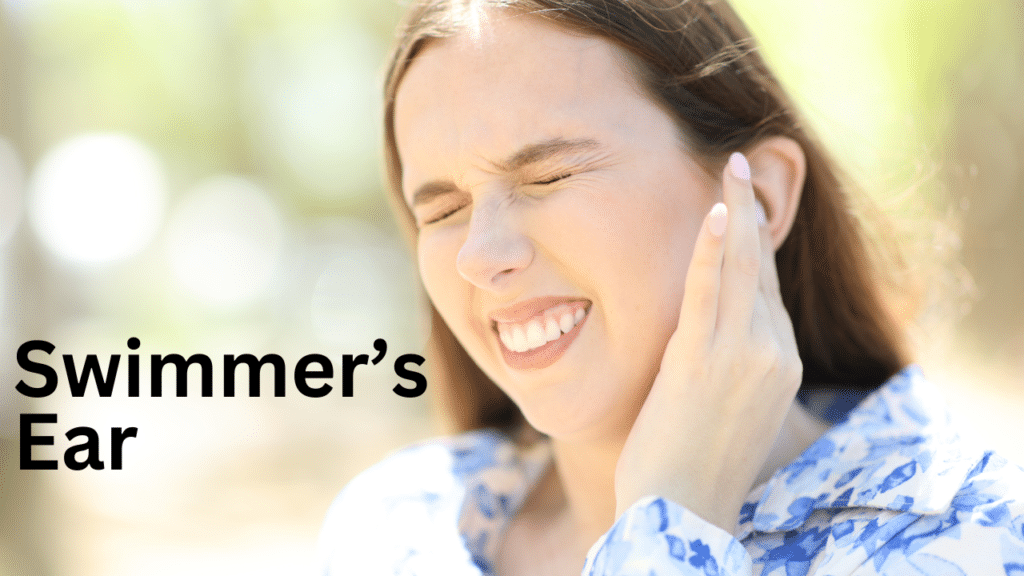
Swimmer’s Ear
June is the perfect time to dive into swimming pools, lakes, and oceans to cool off and have fun. But with all that water activity comes the risk of swimmer’s ear, a pesky infection of the outer ear canal. This condition occurs when water gets trapped in your ear, creating a moist environment that encourages bacterial growth. Symptoms include itching, redness, discomfort, and even temporary hearing loss—none of which are welcome additions to your summer plans.
Preventing swimmer’s ear is easier than you might think. Start by keeping your ears as dry as possible. Use earplugs or a swimming cap when you’re in the water, and make sure to dry your ears thoroughly afterward. Tilt your head to each side to let any trapped water escape, and gently tug on your earlobe to help open the ear canal. A towel can help, but avoid sticking anything into your ears, as this can push water further in or cause injury.
If you feel water stuck in your ear, try using a few drops of an over-the-counter drying ear drops, which can help evaporate the trapped moisture. Alternatively, you can make your own solution with equal parts white vinegar and rubbing alcohol, which helps dry out the ear and creates an inhospitable environment for bacteria.
Should you develop symptoms of swimmer’s ear despite these precautions, it’s important to treat it promptly. Over-the-counter pain relievers can help manage discomfort, but you may need prescription ear drops from a healthcare provider to clear up the infection. If you notice severe pain, discharge from the ear, or if your symptoms persist, seek medical attention to prevent complications.
With a few simple steps, you can keep your ears happy and healthy while you swim. So, splash away and enjoy all the aquatic adventures June has to offer, without letting swimmer’s ear dampen your spirits.
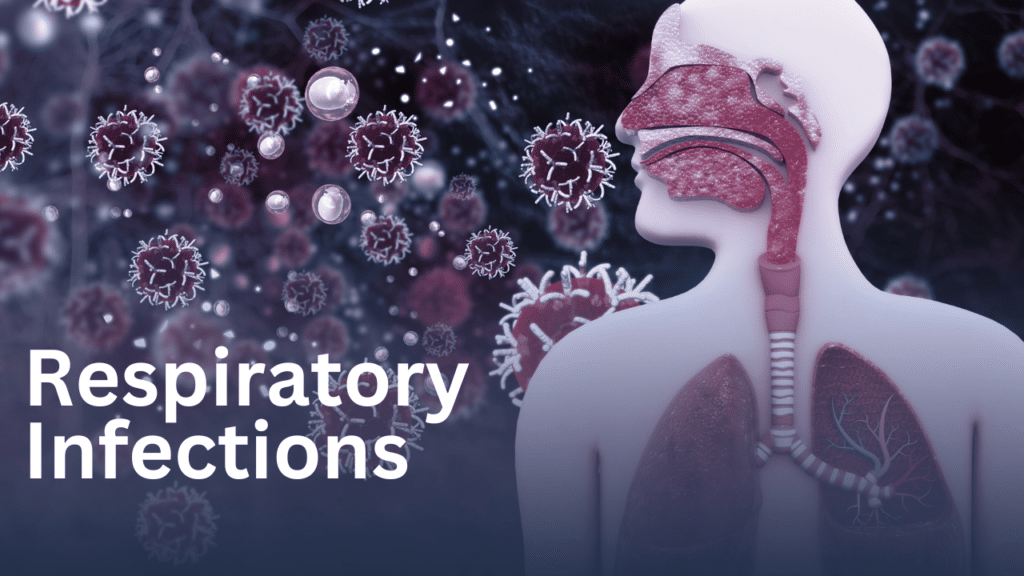
Respiratory Infections
While respiratory infections are typically associated with the colder months, they can still sneak up on you in June. The fluctuating temperatures and increased use of air conditioning can create an environment where colds and other respiratory issues thrive. It’s the ultimate irony: one minute you’re basking in the summer sun, and the next you’re reaching for tissues and cough drops.
To avoid these unwelcome summer sniffles, start with some basic hygiene. Wash your hands frequently with soap and water, especially after being in public places or touching surfaces like doorknobs and railings. Hand sanitizer is a good backup when soap and water aren’t available.
Air conditioning, while a blessing in the summer heat, can contribute to respiratory infections if not maintained properly. Don’t forget to regularly clean and replace air filters to avoid the accumulation of dust, mold, and bacteria. If you’re spending time indoors with others, good ventilation is key—open windows or use fans to keep the air circulating.
Staying hydrated is another crucial aspect of keeping your respiratory system in top shape. Water helps maintain the moisture in your mucous membranes, which are your body’s first line of defense against respiratory pathogens. Also, try to maintain a balanced diet rich in fruits and vegetables to support your immune system.
If you do catch a summer cold, rest is your best friend. Allow your body to recover by getting plenty of sleep and taking it easy on strenuous activities. Over-the-counter medications can help manage symptoms, but if you experience more severe issues like difficulty breathing or a persistent high fever, seek medical attention.
By taking these preventive steps, you can reduce your risk of summer respiratory infections and keep the focus on fun, not flu. Enjoy the sunny days and warm nights of June, and breathe easy knowing you’re doing your part to stay healthy.
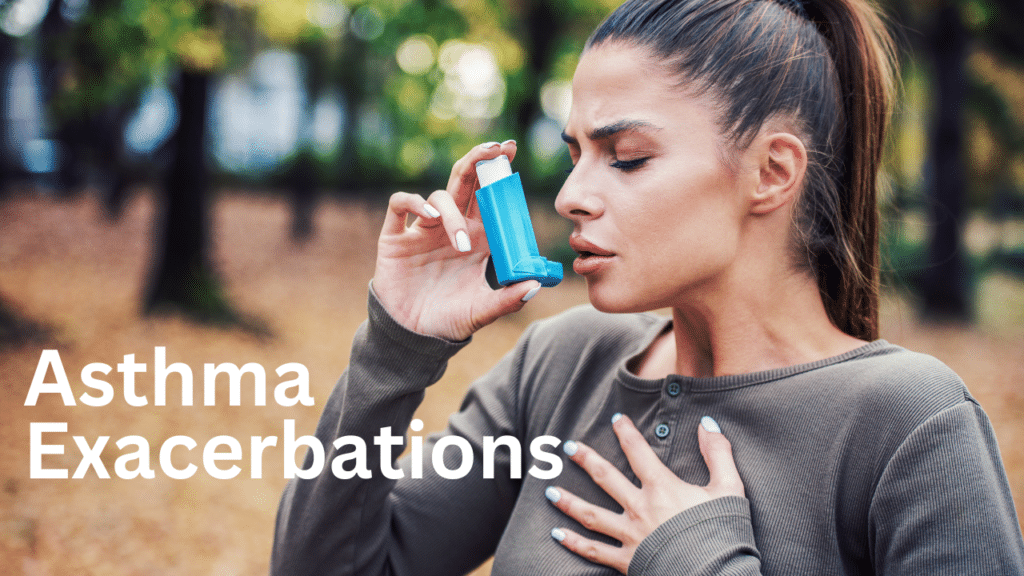
Asthma Exacerbations
June’s heat, humidity, and rising pollen levels can spell trouble for individuals with asthma. The combination of these factors can trigger asthma symptoms, making breathing difficult and potentially leading to severe asthma attacks. Managing asthma in the summer requires extra vigilance and a proactive approach to avoid exacerbations.
First, be aware of your asthma triggers and take steps to minimize exposure. Keep windows closed to prevent pollen from entering your home, and use air conditioning with a clean filter to maintain indoor air quality.
Humidity can also be a significant trigger for asthma. Using a dehumidifier can help maintain an optimal indoor humidity level. Avoid strenuous activities outdoors during peak heat and humidity, and seek out air-conditioned environments when possible. If you must be active outside, take frequent breaks and stay hydrated to help your body cope with the heat.
Always have your rescue inhaler on hand and ensure you’re using your maintenance medications as prescribed. Monitoring your peak flow readings can help you detect early signs of an asthma exacerbation, allowing you to take action before symptoms worsen. Create an asthma action plan with your healthcare provider, detailing steps to take during an asthma attack.
It’s also wise to stay informed about local air quality. Poor air quality, often due to pollution and high pollen levels, can exacerbate asthma symptoms. Use apps or websites that provide real-time air quality updates, and limit outdoor activities on days when air quality is poor.
Despite the challenges, summer can still be enjoyable for those with asthma. By staying aware of your environment and taking as many preventive measuresto reduce the risk of asthma exacerbations and breathe easier. Embrace the joys of June with confidence, knowing you’ve got your asthma under control.
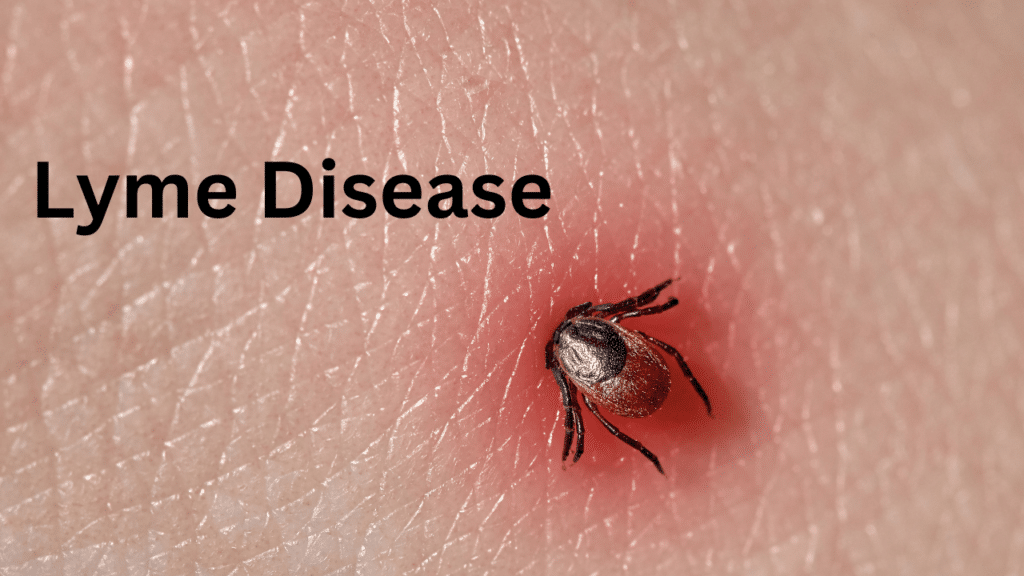
Lyme Disease
June’s warm weather and lush landscapes invite us to spend more time in nature, but they also increase the risk of Lyme disease. This tick-borne illness is transmitted by the bite of infected black-legged ticks, which are particularly active during the summer months. Please make sure to remember the following: “Lyme disease can lead to severe health issues if not addressed, thus it is important to take preventive measures and identify the symptoms early.”
When planning outdoor activities in wooded or grassy areas, dress smart to prevent tick bites. Wear long sleeves, long pants, and tuck your pants into your socks to minimize skin exposure. Light-colored clothing can help you spot ticks more easily. Applying a tick repellent containing DEET or permethrin to your skin and clothes provides an extra layer of protection.
After spending time outdoors, perform a thorough tick check on yourself, your children, and your pets. Ticks love to hide in warm, moist areas, so pay special attention to spots like the scalp, behind the ears, under the arms, and around the waist. If you find a tick, remove it promptly using fine-tipped tweezers. Grasp the tick as close to the skin’s surface as possible and pull upward with steady, even pressure to avoid leaving mouth parts embedded in the skin.
Early symptoms of Lyme disease can appear 3 to 30 days after a tick bite and may include fever, chills, headache, fatigue, muscle and joint aches, and swollen lymph nodes. One of the most distinctive signs is a red, circular rash that may expand and resemble a bull’s-eye. If you experience these symptoms, contact a healthcare provider immediately. Early treatment with antibiotics is crucial for preventing more severe complications.
To reduce tick habitats around your home, keep your lawn well-maintained and remove leaf litter, tall grasses, and brush from around your property. Creating a barrier of wood chips or gravel between your yard and wooded areas can also help keep ticks at bay.
If you suspect you’ve been exposed to Lyme disease, getting a Lyme disease test is a proactive step. You can get a Lyme disease antibodies blood test (IgG and IgM) to detect an infection. For more information, visit Walk-In Lab for a Lyme Disease Test .
By taking these preventive measures, you can enjoy the great outdoors without the worry of Lyme disease casting a shadow over your summer adventures. Stay vigilant, check for ticks, and embrace the beauty of June with peace of mind.
Conclusion
June is a wonderful month filled with outdoor adventures, family gatherings, and sunny days. However, it also comes with its fair share of health challenges. By being aware of the common ailments that can arise during this time of year and taking proactive steps to prevent them, you can enjoy all that June has to offer without the unwanted side effects.
From managing allergies with the right medications and precautions to staying hydrated and avoiding heat-related illnesses, these small steps can make a big difference. Remember to protect your skin from the sun, handle and store food properly to avoid food poisoning, and take measures to prevent insect bites and stings. Keeping your ears dry can prevent swimmer’s ear, while maintaining good hygiene and monitoring air quality can reduce the risk of respiratory infections and asthma exacerbations. Lastly, stay vigilant about ticks to prevent Lyme disease.
With just a little preparation and mindfulness, you can keep yourself and your loved ones healthy and safe. Enjoy your summer and embrace the joys of summer, armed with the knowledge and tools to make the most of this vibrant season. Stay cool, stay safe, and most importantly, have fun!